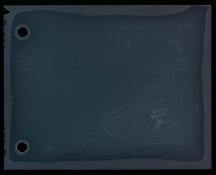Here is how I will create screen plates when E6 is discontinued.... gulp... (hopefully never!)
From J.S. Friedman's History of Color Photography, p. 154, ch. 'Formation of the Screen'
The ability of the photographic emulsion, be it sensitized either with dichromated gelatin or silver halide salts, to reproduce fine details, was quickly seized upon for the formation o fscreens. It was first suggested by du Hauron ("Les Couleurs en Photographie Solution du Problem," 1869, p. 54; "La Triplice photographique et l'Imprimerie," (1987), p. 336). A gelatin layer, dyed primary red, and sensitized with dichromate, was exposed through a black & white line screen, the blacks having twice the width of the whites. The action of the light tanned the gelatin that corresponded to the transparent areas of the master screen. The soft gelatin was removed by a hot water etch. This left a series of red lines, separated by transparent portions whose width was twice that of the reds. The plate was next recoated with gelatin dyed green, and sensitized with dichromate. The second exposure was also through a black & white screen, but this time the width of the two was the same, and their direction was at right angles to the red lines. [and exposed through the base] Since the red portions passed no light that was effective upon the dichromated gelatin, only the gelatin lying between the previously formed lines was affected, and of this, only one half of the total area became tanned. Hot water treatment removed the unaffected gelatin, which was finally replaced with new gelatin dyed a primary blue, and as before, sensitized with dichromate. The last exposure was made without any master screen, only through the red and green areas formed previously. These acted as opaque lines for the blue rays to which the gelatin was sensitive. Between all coatings, it was desirable to further treat the plate to thoroughly fix the dyes or coloring matter in the tanned gelatin. Hence no diffusion of colors was possible.
Brilliant!


 Yeah right! (hehehe)
Yeah right! (hehehe)


